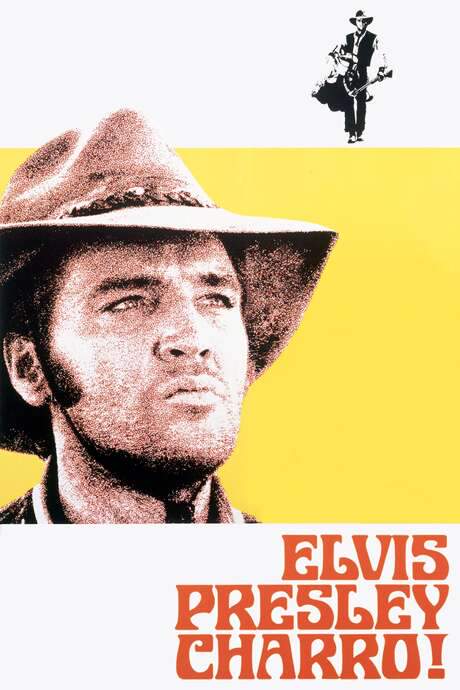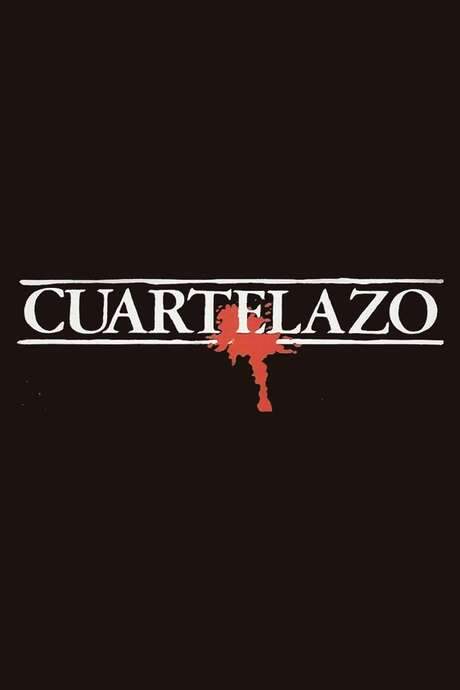
And Starring Pancho Villa as Himself
Year: 2003
Runtime: 112 mins
Language: English
Director: Bruce Beresford
In 1914, Mexican revolutionary Pancho Villa offered film studios the chance to record his real battles against Porfirio Díaz’s army, hoping the footage would raise money for weapons and ammunition. The Mutual Film Corporation, prompted by producer D.W. Griffith, dispatched filmmaker Frank Thayer to negotiate a contract directly with Villa.
Warning: spoilers below!
Haven’t seen And Starring Pancho Villa as Himself yet? This summary contains major spoilers. Bookmark the page, watch the movie, and come back for the full breakdown. If you're ready, scroll on and relive the story!
And Starring Pancho Villa as Himself (2003) – Full Plot Summary & Ending Explained
Read the complete plot breakdown of And Starring Pancho Villa as Himself (2003), including all key story events, major twists, and the ending explained in detail. Discover what really happened—and what it all means.
In 1923, an observant studio executive named Frank N. Thayer receives a letter that arrives with a Virgin of Guadalupe medallion, a symbol that will spark a deeper reflection on a long-ago chapter of history. This trinket nudges Thayer back to the height of the Mexican Revolution, when Pancho Villa [Antonio Banderas] faces serious funding gaps and a hostile media environment shaped by the Hearst press campaigns against him. To counter that pressure, Villa’s Jewish-American lieutenant, Sam Drebben [Alan Arkin], works to marshal interest from American film studios, hoping the camera can become a tool to spread his legend. Its initial appeal catches the attention of D. W. Griffith [Colm Feore], who quickly convinces Mutual Film Studios boss Harry Aitken [Jim Broadbent] to finance a project that could turn Villa’s exploits into a film epic.
Thayer, who starts as a lowly errand boy for the studio but earns Villa’s trust, is then placed in charge of steering the whole venture. He travels back to Mexico with a screened combination of director, actors, producers, cameramen, and screenwriters who aim to chronicle Villa’s deeds on screen. To capture the story with some distance, a younger actor is cast to portray a younger Villa, Raoul Walsh [Kyle Chandler]—the future film director—while Villa himself offers a cameo as an older version of the same man. Thayer, meanwhile, finds himself drawn into a personal entanglement, beginning a romance with Teddy Sampson [Alexa Davalos], a rising star in the production who brings warmth to a project that is as much myth-making as history.
As filming progresses, Villa’s questions about artistic license surface; the scriptwriters and director take some creative liberties to heighten drama, and Villa’s temper flares at what he sees as misrepresentation. Yet he agrees to participate, even allowing a cameo appearance, since the project could carry his name to audiences who have yet to meet him. Thayer also receives an unexpected gift in the form of two young child soldiers who are drafted by Villa to help with editing—an arrangement that underscores the gritty, almost uncanny blend of cinema and sanctified memory that the crew is helping to manufacture.
The production then shifts to the siege of Torreón. Thayer and his crew accompany Villa’s army as they advance toward the Federal fortress, marching through peril and danger toward a climactic confrontation. A skirmish en route snatches away one of Thayer’s assistants, and the siege that follows tests everyone involved. Villa’s forces press the attack, initially gaining ground, but with brutal costs as the Federal defenses hold firm and then crumble. The following bombardment and final assault decimate Torreón’s defenders, and in the moment that should crown triumph, the crew witnesses a grim act: Villa shoots a widow in the aftermath of the battle. Disgusted, Thayer and his team withdraw, their ambitions of cinematic glory colliding with a stark moral reckoning.
When The Life of General Villa premieres in the United States, it proves to be a resounding success—yet the crew carries with them a growing ambivalence about their role in shaping—and sanitizing—such a violent figure. Thayer’s romance with Teddy dissolves in the shadow of the story’s moral complexities, and he discovers that the project’s true cost goes beyond money. Nine years pass, and Thayer encounters Sam Drebben [Alan Arkin] again in a restaurant. Thayer has endured physical wounds of the era—having lost an eye and an arm—yet his disillusionment deepens as he speaks of a Mexican government that resembles the tyranny Huerta had represented. He also laments that he did not gift Villa with a copy of the film, a missing piece that now gnaws at him.
A letter from Thayer’s surviving assistant—who has grown to adulthood and even had Villa as his godfather—offers a different memory: Villa, despite being assassinated, remains revered by the people of Mexico. The assistant’s reflections breathe new life into Thayer’s purpose, prompting him to return to Mexico to screen the film for a living audience. The response is electric: a standing ovation greets Villa’s closing speech, and the history Thayer helped to record is reawakened in the theatergoers’ hearts. The tale concludes with Villa’s interment in Mexico City, the film itself having become a lost treasure of cinema, and Thayer’s own place in history reduced to a “footnote to a legend”—one that still illuminates the powerful bond between cinema and memory.
This synthesis of reality and myth invites viewers to consider how a filmmaker’s lens can shape a nation’s memory while also forcing us to confront the uneasy truths behind every dramatic recreation. The film’s arc, anchored by the larger-than-life figure of Pancho Villa and the behind-the-scenes drama of early Hollywood, remains a nuanced meditation on ambition, responsibility, and the way legends endure long after the screen goes dark.
Last Updated: October 09, 2025 at 16:51
Unlock the Full Story of And Starring Pancho Villa as Himself
Don't stop at just watching — explore And Starring Pancho Villa as Himself in full detail. From the complete plot summary and scene-by-scene timeline to character breakdowns, thematic analysis, and a deep dive into the ending — every page helps you truly understand what And Starring Pancho Villa as Himself is all about. Plus, discover what's next after the movie.
And Starring Pancho Villa as Himself Timeline
Track the full timeline of And Starring Pancho Villa as Himself with every major event arranged chronologically. Perfect for decoding non-linear storytelling, flashbacks, or parallel narratives with a clear scene-by-scene breakdown.

Characters, Settings & Themes in And Starring Pancho Villa as Himself
Discover the characters, locations, and core themes that shape And Starring Pancho Villa as Himself. Get insights into symbolic elements, setting significance, and deeper narrative meaning — ideal for thematic analysis and movie breakdowns.

Similar Movies to And Starring Pancho Villa as Himself
Discover movies like And Starring Pancho Villa as Himself that share similar genres, themes, and storytelling elements. Whether you’re drawn to the atmosphere, character arcs, or plot structure, these curated recommendations will help you explore more films you’ll love.
Explore More About Movie And Starring Pancho Villa as Himself
And Starring Pancho Villa as Himself (2003) Scene-by-Scene Movie Timeline
And Starring Pancho Villa as Himself (2003) Movie Characters, Themes & Settings
And Starring Pancho Villa as Himself (2003) Spoiler-Free Summary & Key Flow
Movies Like And Starring Pancho Villa as Himself – Similar Titles You’ll Enjoy
Old Gringo (1989) Full Summary & Key Details
The Treasure of Pancho Villa (1955) Movie Recap & Themes
Villa Rides (1968) Ending Explained & Film Insights
A Town Called Hell (1971) Spoiler-Packed Plot Recap
Shoot, Gringo… Shoot! (1968) Full Movie Breakdown
Charro! (1969) Story Summary & Characters
Pancho Villa (1972) Full Movie Breakdown
This Was Pancho Villa: First chapter (1957) Detailed Story Recap
Let’s Go with Pancho Villa! (1936) Film Overview & Timeline
This Was Pancho Villa: Second chapter (1958) Plot Summary & Ending Explained
Viva Villa! (1934) Full Movie Breakdown
Cuartelazo (1977) Full Summary & Key Details
Viva Zapata! (1952) Film Overview & Timeline
Wanted: The Sundance Woman (1976) Full Summary & Key Details
This Was Pancho Villa: Third chapter (1958) Spoiler-Packed Plot Recap

















